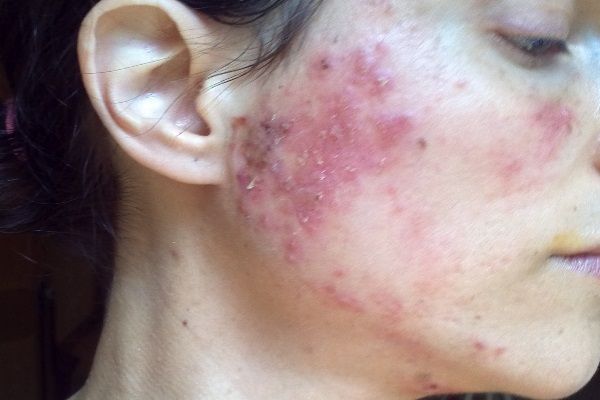Dealing with a staph infection on the face or body can be just as much an emotional burden as a physical one. This article is going to explain where staph infections come from and how they can be treated. If, at any point, you believe you may be suffering from a staph infection, it is recommended that you seek a consultation with your doctor as soon as possible. An untreated staph infection could result in a more severe condition.
When we say “staph infection”, we are actually referring to an infection caused by the staphylococcus bacteria. While this particular bacteria is normally found on human skin in the nose, mouth, and “nether” regions of the body, certain strains of the bacteria can enter the body and cause various problems. Staph infections are responsible for many illnesses, even urinary tract infections and infections of the heart and lungs, but in this article we are mainly going to focus on the effects that the staph infection can have on our skin.
A staph infection on the face and body are contagious, which means the infection can be spread by skin-to-skin contact as well as contaminated objects. For instance, staph can be spread through sharing towels, bedding, and other personal items with someone who has a staph infection.
The following is a list of skin issues that are caused by the staphylococcus bacteria. You may be familiar with some of them, as all are quite common conditions.
Boil
Boils are large, painful lumps under the skin. They are usually red in color and may or may not be accompanied by a white head. They are puss-filled and will continue to grow in size until the boil pops and the puss has drained. They are very common and will usually go away on their own.
Stye
A stye, formally known as a hordeolum, is an infection caused by the staph bacteria which targets the base of an eyelash. The area of the eyelid that the lash connects to swells up and can be quite painful. A stye will often go away on its own, however some topical cream may be prescribed by a doctor to ease the pain and bring the swelling down.
Folliculitis
Folliculitis is very aptly named, part of the word being derived from “follicle,” which is exactly what this condition targets. A person suffering from folliculitis may have noticed that they have developed a painful bump on the skin at the base of a hair follicle. There may or may not be a “white head” on the pimple. These are very minor issues and very rarely need medical treatment. They are most likely caused by shaving or irritation due to clothing. In some cases, folliculitis can worsen and turn into a boil.
Cellulitis
Cellulitis usually takes place on the legs, but it can occur on any part of the body. This particular condition starts out as a red, slightly swollen area of skin that is often painful when touched. The patch of cellulitis will be warm and can often make the person feel ill and/or run a fever. A person with cellulitis should consult a doctor if they feel exceedingly ill or if their fever carries on longer than a few days.
The best way to prevent yourself from acquiring a staph infection is to practice good hygiene. This means washing your hands after using the toilet, doing laundry, cleaning bathrooms, etc. Taking a bath daily will also prove to reduce your chances of getting a contagious staph infection.
You should be aware that a staph infection on the face or body may not always be preventable. As mentioned earlier, staph bacteria are always present on the human body and can make their way into the body through cuts or other injuries. If you or a family member has a staph infection, try to keep the area covered and try not to touch it. Don’t let anyone else share items used by the staph infected person until the infection is gone and the items have been thoroughly cleaned.




